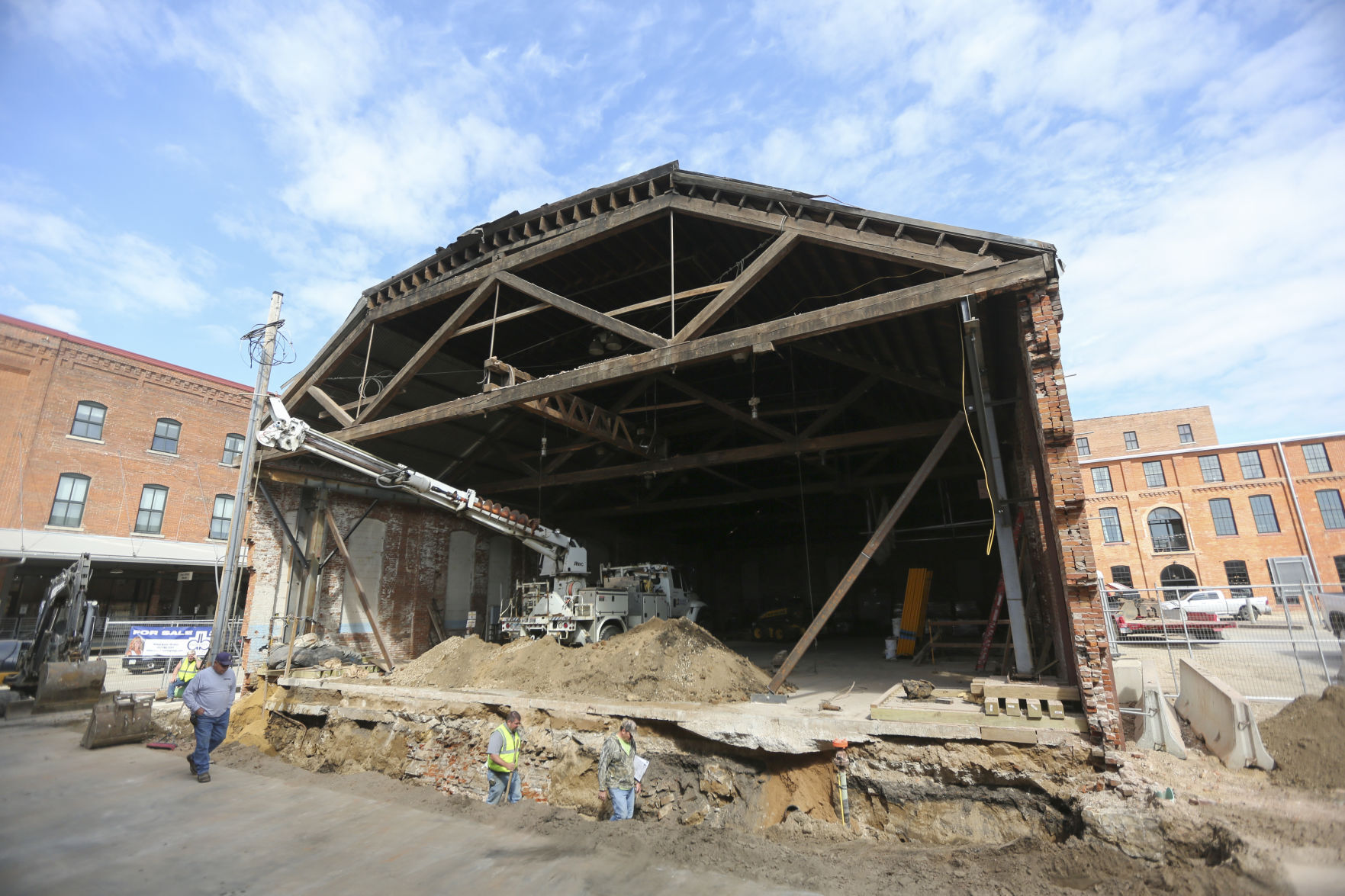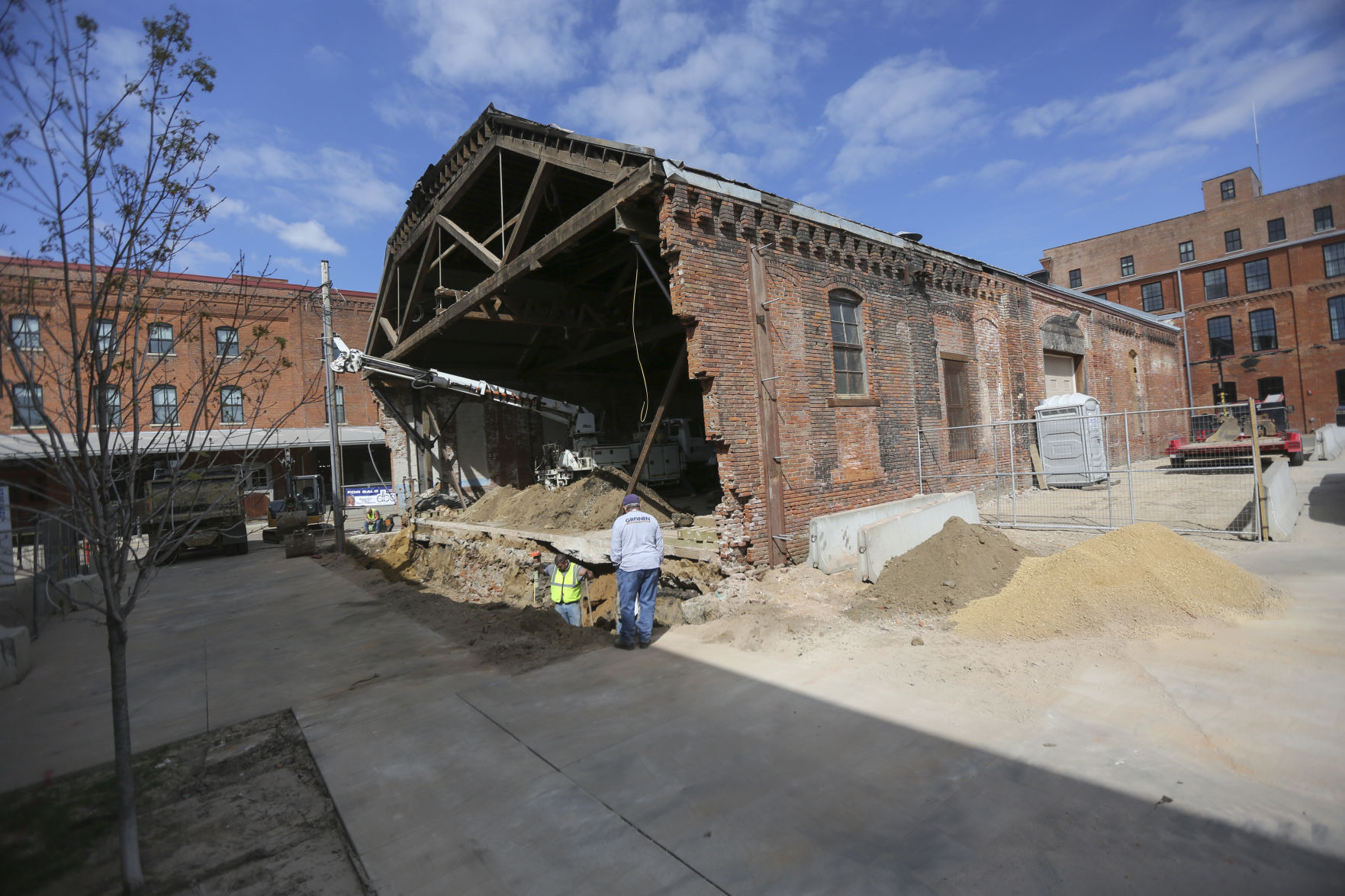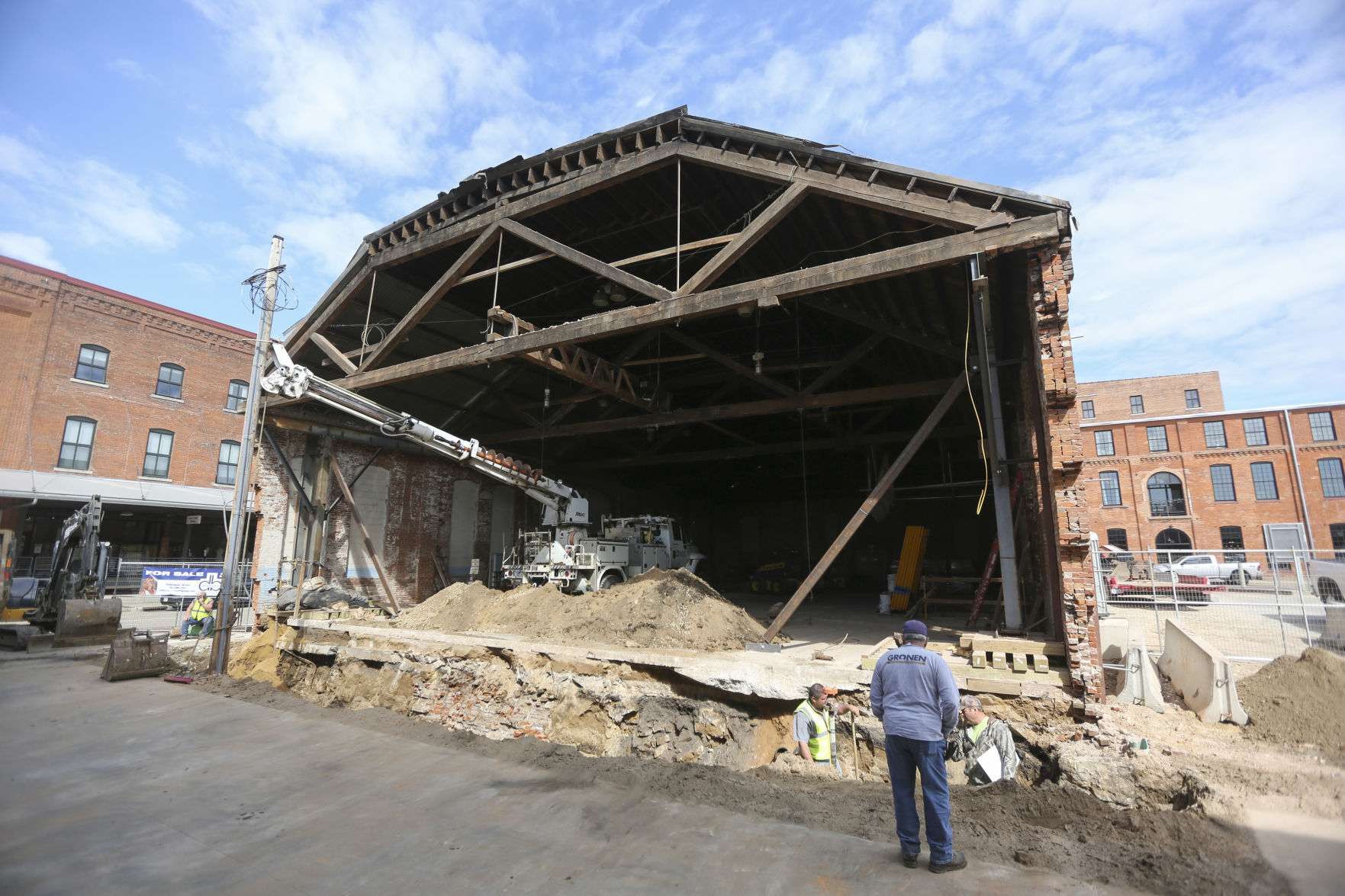The restoration of a historic building in the heart of Dubuque’s Millwork District could give the structure a second life.
Crews are working on the “core and shell” of the Rouse & Dean Foundry building, located at 990 Washington St. Often referred to as the Alamo building, the structure was built in the late 1800s and is believed to be one of the oldest — if not the oldest — structures in the Millwork District.
Restoration work is being conducted by Gronen, a Dubuque-based development business that has spearheaded the rehabilitation of multiple properties in the district. President John Gronen framed the restoration of the Rouse & Dean building as complicated but worthwhile.
“These are challenging projects, and there is a lot of work that this building needs,” he said. “It’s in a blighted condition, and it is right in the center of the Millwork District. Your options are either to take it down or repair it.”
Gronen said a tenant for the property has not been set and it remains unclear what kind of entity will occupy the structure.
He said he believes the work underway is a critical step toward generating more interest.
“It is important to improve the core and shell of the building, to get enough flesh on the bone that people can see what the possibilities are,” he said.
Crews started work in late 2020 and have restored masonry and removed paint from joists and beams. They recently carried out the most eye-catching component of the project thus far when they removed the south wall of the building.
Gronen said there used to be another building attached to Rouse & Dean’s south end. That adjoining structure later was removed, leaving the south wall exposed to outdoor elements it wasn’t built to withstand.
Gronen said workers are salvaging brick throughout the process. They ultimately will pour a foundation to rebuild the wall.
Another highly visible component of the project is yet to come.
Crews will reconstruct the rooftop monitor that once topped the structure. Rooftop monitors — raised structures that sit atop a roof — often feature large windows that allow light to filter in to the building below.
Such will be the case at the Rouse & Dean building, project manager Terri Droessler said.
“It will bring some light into the building itself,” she said.
Droessler framed restoration as a process requiring both precision and balance.
“You are making sure the historical components (of the building) are still structurally sound and then adding new components to it — and doing it in a way that keeps the integrity of the aesthetics and the historical elements of the building intact as much as we can,” she said.
She said it is exciting to work on a property that has played an important role in the Millwork District and “pays homage” to what was in the neighborhood. The Rouse & Dean building formerly housed a foundry.
She also noted that the property stands out aesthetically, offering a different look in a neighborhood where many restoration projects have focused on massive, multi-story warehouse buildings.
“This will add another component to that whole area,” she said. “It stands out and has a different architecture than other buildings (in the neighborhood). It has a life of its own.”
A new chapter in that life could be around the corner.
Gronen said the core and shell work will be completed by this time next year, an accomplishment that could result in more interest from a potential occupant. He said the company was receiving strong interest prior to the spring of 2020, but that waned due to the COVID-19 pandemic.
In late 2019, when Iowa economic officials approved a tax credit supporting the building’s restoration, state documents indicated that the building “is envisioned as a new restaurant/bar that is a lively, year-round focal point and gathering space.”
Officials with Gronen acknowledge that a bar or restaurant remains a strong possibility but indicated other options remain.
“I could see it being used as a private office, or a restaurant, or an event center,” Droessler said. “The possibilities are endless.”
Gronen noted that state and federal historic tax credits, a Main Street Iowa grant, a city façade grant and a grayfield tax credit all have eased the financial burden of the restoration. While those things help, Gronen said there is still a “significant investment” his company must make in the project.
Gronen emphasized that he is pleased to see the project moving forward — and happy about the message that sends.
“We hope this demonstrates these buildings sometimes need serious work,” he said. “There are challenges and issues, but they can be addressed.”





